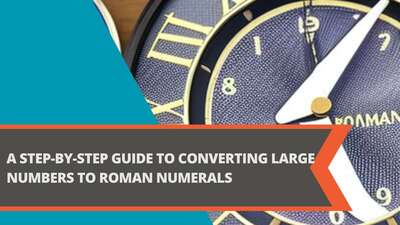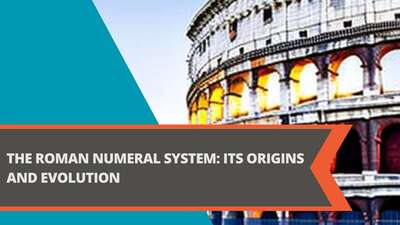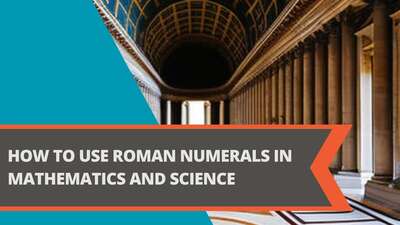A Beginner's Guide to Number Systems: Understanding Binary, Octal, and Hexadecimal
- Definition of Number Systems
- Formula for Converting Between Number Systems
- Examples of Number Systems
- Binary
- Octal
- Hexadecimal
- Explanation of Number Systems
- Binary
- Octal
- Hexadecimal
- FAQ about Number Systems
- Why are different number systems used in computer science?
- What is the formula for converting between number systems?
- Which number system is most commonly used in computer science?
- What is a nibble?
- Can number systems be used in real life?
- Conclusion
- References
If you're new to the world of programming and computer science, understanding different number systems can be a daunting task. However, it's an important foundational skill that will allow you to work with computers and programming languages more efficiently. In this article, we'll break down the basics of number systems and focus on three popular systems: binary, octal, and hexadecimal.
Definition of Number Systems
A number system is a mathematical notation used to represent numbers. In other words, it's a way of writing and working with numbers. The most common number system is the decimal system, which uses ten digits (0-9) to represent numbers. However, computers and programming languages use different number systems, such as binary, octal, and hexadecimal, because they are more efficient for working with digital systems.
Formula for Converting Between Number Systems
Converting between number systems is a simple process that involves dividing the original number by the base of the new number system and then writing down the remainder. The remainder is then divided by the base of the new number system again, and the process is repeated until the quotient is zero. The remainders are then written down in reverse order to create the new number in the new number system. For example, to convert the decimal number 42 to binary:
Step 1: Divide 42 by 2, which is the base of the binary system, and write down the remainder (0). The quotient is 21.
Step 2: Divide 21 by 2 and write down the remainder (1). The quotient is 10.
Step 3: Divide 10 by 2 and write down the remainder (0). The quotient is 5.
Step 4: Divide 5 by 2 and write down the remainder (1). The quotient is 2.
Step 5: Divide 2 by 2 and write down the remainder (0). The quotient is 1.
Step 6: Divide 1 by 2 and write down the remainder (1). The quotient is 0.
The remainders in reverse order are 101010, so the binary representation of 42 is 101010.
Examples of Number Systems
Now that we understand the formula for converting between number systems, let's take a closer look at three popular systems: binary, octal, and hexadecimal.
Binary
The binary system uses only two digits, 0 and 1, to represent numbers. Each digit in a binary number is called a bit, and a group of eight bits is called a byte. Binary numbers are used extensively in computer systems because they are easy to represent with electronic circuits. For example, the binary number 10101111 represents the decimal number 175.
Octal
The octal system uses eight digits, 0-7, to represent numbers. Octal numbers are commonly used in computer programming because they are more compact than binary numbers and easier to read than hexadecimal numbers. For example, the octal number 377 represents the decimal number 255.
Hexadecimal
The hexadecimal system uses sixteen digits, 0-9 and A-F, to represent numbers. Hexadecimal numbers are often used in computer systems because they are easy to convert to binary and are more compact than decimal numbers. For example, the hexadecimal number FF represents the decimal number 255.
Explanation of Number Systems
Now that we've explored some examples of number systems, let's dive a bit deeper into how they work.
Binary
The binary system is based on powers of 2. Each digit in a binary number represents a power of 2. The rightmost digit represents 2^0 (1), the next digit to the left represents 2^1 (2), the next digit to the left represents 2^2 (4), and so on. For example, the binary number 1011 represents 1 * 2^3 + 0 * 2^2 + 1 * 2^1 + 1 * 2^0 = 8 + 0 + 2 + 1 = 11.
Octal
The octal system is based on powers of 8. Each digit in an octal number represents a power of 8. The rightmost digit represents 8^0 (1), the next digit to the left represents 8^1 (8), the next digit to the left represents 8^2 (64), and so on. For example, the octal number 763 represents 3 * 8^0 + 6 * 8^1 + 7 * 8^2 = 3 + 48 + 448 = 499.
Hexadecimal
The hexadecimal system is based on powers of 16. Each digit in a hexadecimal number represents a power of 16. The rightmost digit represents 16^0 (1), the next digit to the left represents 16^1 (16), the next digit to the left represents 16^2 (256), and so on. For example, the hexadecimal number A1 represents 10 * 16^1 + 1 * 16^0 = 160 + 1 = 161.
FAQ about Number Systems
Why are different number systems used in computer science?
Different number systems are used in computer science because they are more efficient for working with digital systems. Binary numbers are easy to represent with electronic circuits, octal numbers are more compact than binary numbers, and hexadecimal numbers are easy to convert to binary and are more compact than decimal numbers.
What is the formula for converting between number systems?
To convert between number systems, divide the original number by the base of the new number system and write down the remainder. Repeat this process with the quotient until the quotient is zero. Write down the remainders in reverse order to create the new number in the new number system.
Which number system is most commonly used in computer science?
The most commonly used number system in computer science is the binary system. This is because digital systems work on a binary level, with switches and circuits representing 0s and 1s.
What is a nibble?
A nibble is a unit of digital information that consists of four bits. It represents one hexadecimal digit or two decimal digits. A byte is made up of two nibbles.
Can number systems be used in real life?
Yes, number systems are used in real life in various fields such as computer science, engineering, and mathematics. They are also used in everyday life such as when using a digital clock or when converting currency.
Conclusion
In conclusion, understanding number systems is important for anyone working in computer science or other fields that deal with digital systems. Binary, octal, and hexadecimal are all useful number systems that have their own unique characteristics and advantages. By understanding the fundamentals of each system and knowing how to convert between them, you can better understand how digital systems work and communicate with one another. It can also be helpful for everyday life, such as when working with digital clocks or converting currency.
So if you're new to the world of number systems, don't be intimidated! With a bit of practice and patience, you can easily master the basics and take your understanding of digital systems to the next level.







